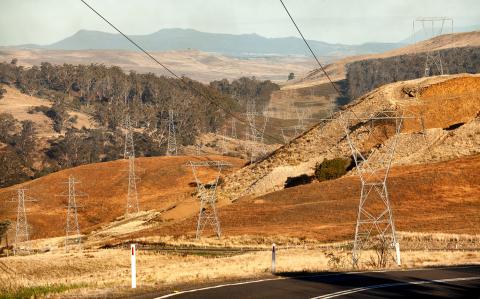IEEFA U.K.: Local public pension assets tread water, driving fund managers to give infrastructure a closer look
LONDON — Local government pension schemes representing more than five million public sector workers saw asset values nudge up last year, trailing bumper stock market growth the year before, as some prepared to shift assets into infrastructure under a government plan to help them invest more in roads, bridges and renewable energy projects.
Collectively, local government pension schemes (LGPS) in England and Wales are one of the world’s biggest defined benefit schemes, comprising over 14,000 employers, 5.6 million members, and with assets worth more than £270 billion (US$341 billion).
As of December, all but four of 90 LGPS schemes had reported results for 2017/18. On a like for like comparison, excluding these four, our analysis shows that net asset values grew by 4.8% last year, to £270 billion, compared with inflation of 2.3%.
That compares with stellar growth the year before, of 21.4%, on the back of roaring share prices.
Among individual schemes, Wiltshire County Council LGPS saw the biggest rise in net asset value last year, by 9.7%, while Brent, West Yorkshire and Kingston upon Thames all fell.
Among eight LGPS schemes that reported returns in 2017/18 on a range of asset classes including infrastructure, IEEFA analysis has median returns to equities at 3.5%, compared with 4.5% on infrastructure, and minus 0.3% on hedge funds. The best-performing assets classes were property (10.2%) and private equity (11.5%).
A way to beat inflation and prepare for a lower-carbon future.
One way to beat inflation recognised by several LGPS funds is to invest in public infrastructure projects with index-linked returns, such as renewable energy projects, which in Britain receive payments per unit of power generation that rise annually.
Allocations to infrastructure remained low last year, however, at £6.6 billion reported to date, or 2.4% of total assets, up from 2.1% the year before, IEEFA’s analysis of available data .
That said, many asset owners were planning to invest in infrastructure for the first time. The growing interest is linked with a U.K. government plan to help LGPS do complex deals in infrastructure, by pooling asset management of the 90 schemes into eight collective investment vehicles, and so scale up expertise and clout. That pooling process went live in 2018, and the eight resulting pools have median assets under management of £37 billion each, compared with a median £2.1 billion in the underlying schemes.
In London alone, LGPS schemes announcing infrastructure investment targets for the first time last year included Lewisham, Southwark, Camden, Havering, Islington, Lambeth and Wandsworth. Of these, some, including Lewisham, made specific plans to invest in renewable energy infrastructure by allocating 2% of assets under management to renewables. Southwark plans to allocate 5% of assets to “sustainable infrastructure.”
IN ADDITION TO INFLATION PROTECTION, OTHER ALLURING QUALITIES OF RENEWABLE ENERGY INFRASTRUCTURE INCLUDE the exposure it brings to a low-carbon transition that is seen as making such assets more attractive.
A standout leader on preparedness for that transition expansion is the Environment Agency pension fund, which joined a handful of LGPS pension funds in reporting climate risk exposure for the first time under new, voluntary guidelines published by the international Taskforce on Climate-related Financial Disclosure (TCFD).
Other pension funds that reported climate risks under TCFD with large renewable energy infrastructure investments, included Greater Manchester, South Yorkshire and West Midlands. Meanwhile, offshore wind accounted for 4% of assets under management, at Croydon, Haringey quoted an investment-commitment target of 5% of assets to renewables, and Lancashire said that energy including renewables accounted for half of its infrastructure investments, which are worth nearly £1 billion.
Gerard Wynn ([email protected]) is an IEEFA energy finance consultant.
Related items:
IEEFA update: U.K. pension funds lag in renewable energy infrastructure investing
IEEFA Report: U.K. Pension Funds Can Benefit Now From Renewables Infrastructure Play
IEEFA U.K.: Suspension of £3.8 billion capacity market is an opportunity for re-think














